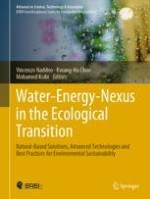This volume includes selected contributions presented during the 3rd edition of the international conference on WaterEnergyNEXUS, which was held in Tunisia in December 2020. This conference was organized by the University of Sfax (Tunisia), in cooperation with the Sanitary Environmental Engineering Division (SEED) of the University of Salerno (Italy), the Advanced Institute of Water Industry at Kyungpook National University (Korea) and The Energy and Resources Institute, TERI (India). The WaterEnergyNEXUS series of conferences are supported by the UNESCO World Water Association Programme (WWAP) and the International Water Association (IWA). It also enjoys the patronage of several international scientific societies, associations and organizations and has established a publishing partnership with Springer Nature.
With the support of international experts invited as plenary and keynote speakers, the conference aimed to give a platform for Euro-Mediterranean countries to share and discuss key topics on such water-energy issues through the presentation of nature-based solutions, advanced technologies and best practices for a more sustainable environment within the framework of the ecological transition. This volume gives a general and brief overview of current research focusing on emerging Water-Energy-Nexus issues and challenges and their potential applications to various environmental problems impacting the Euro-Mediterranean zone and surrounding regions. A selection of novel and alternative solutions applied worldwide are included. The volume contains over about one hundred carefully refereed contributions from 48 Countries worldwide selected for the conference. Topics covered in the book include: Nexus framework and governance; Economic evalu ations for investment projects in the water and energy sectors; Innovation of renewable energies and challenges for the mitigation of climate change impact in the water-energy-food-nexus; Advanced technologies and nature-based solutions for the environmental sustainability of the water sector; Water and wastewater technologies for developing countries; Green technologies for sustainable water and wastewater management; Advanced technologies and nature-based solutions in water cycle; Control of hazardous substances and recovery of renewable/valuable resources; Renewable/valuable resources for recovery and utilization; Control of nutrients and hazardous compounds; Energy-saving technologies and future clean energy solutions; Future urban-energy systems with considerations of water and food security; Environmental Biotechnology and Bioenergy; Implementation and best practices. This volume is also an invaluable guide for industry professionals and policymakers working in the water and energy sectors.
